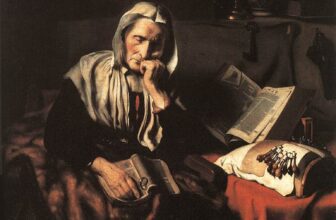
What is Michelangelo’s depiction of the Last Judgement?
Michelangelo’s depiction of the “Last Judgement,” located on the altar wall of the Sistine Chapel in Vatican City, stands as one of the most iconic and ambitious works of art from the Italian Renaissance. Completed between 1536 and 1541 under the patronage of Pope Paul III, this monumental fresco represents the culmination of Michelangelo’s mastery in anatomy, composition, and theological symbolism. However, it also stirred significant controversy, both during its time and in subsequent centuries, due to its bold artistic choices, explicit nudity, and unconventional representation of divine justice. This discussion explores the artistic brilliance of the “Last Judgement,” its theological implications, and the controversies surrounding it.
Artistic Brilliance
Michelangelo’s “Last Judgement” is a visual tour de force that reimagines the traditional representation of the apocalyptic scene. Spanning approximately 48 feet high and 44 feet wide, the fresco portrays the second coming of Christ and the final judgment of souls. Central to the composition is the figure of Christ, depicted not as a gentle shepherd but as a powerful, almost wrathful judge. His muscular physique, raised arm, and intense gaze convey authority and divine judgment. Surrounding Christ is the Virgin Mary, who appears subdued and reflective, along with a host of saints, martyrs, and angels.
The fresco’s dynamism is evident in its spiraling composition, where figures seem to ascend toward salvation or descend into damnation. Michelangelo’s mastery of anatomy is on full display, with every figure rendered with meticulous attention to musculature and movement. The upper portion of the fresco illustrates the heavenly realm, where angels carry the instruments of the Passion, while the lower portion plunges into the chaos of hell, populated by grotesque demons and tormented sinners. The contrast between the serene celestial figures and the tumultuous damned emphasizes the duality of divine justice.
Michelangelo’s use of color, chiaroscuro, and foreshortening adds depth and drama to the scene. The muted palette, dominated by earth tones and blues, lends a somber and reverent tone to the fresco. His ability to create a sense of three-dimensionality on a flat surface is unparalleled, making the figures appear as though they could step out of the wall. The fresco’s scale and complexity required extraordinary skill and endurance, solidifying Michelangelo’s reputation as a genius of the High Renaissance.
Theological Implications
The “Last Judgement” is not merely an artistic masterpiece but also a profound theological statement. It reflects the Catholic Church’s response to the Protestant Reformation and the urgency of spiritual renewal during the Counter-Reformation. The fresco’s emphasis on divine justice and the consequences of sin aligns with the Church’s efforts to reassert its authority and doctrinal clarity.
Christ’s central position and commanding presence underscore the concept of Christ as the ultimate judge, as described in Matthew 25:31-46. The inclusion of saints holding the instruments of their martyrdom serves as a reminder of their intercessory role and the importance of faith and works in achieving salvation. The chaotic depiction of hell, with its vivid imagery of suffering and despair, underscores the consequences of moral failure and the reality of eternal damnation.
However, Michelangelo’s interpretation also deviates from traditional iconography in significant ways. His portrayal of Christ as an athletic, almost intimidating figure departs from the more serene and compassionate representations common in earlier depictions. The inclusion of mythological elements, such as Charon ferrying souls across the River Styx and Minos as a judge of the underworld, reflects Michelangelo’s classical influences and adds a layer of complexity to the fresco’s theological narrative.
Controversies
From its unveiling, the “Last Judgement” sparked intense debate and controversy, both for its artistic choices and its theological implications. The primary sources of contention included the explicit nudity of the figures, the unconventional representation of Christ and other sacred figures, and the inclusion of mythological elements.
Nudity and Decorum
One of the most contentious aspects of the fresco was the explicit nudity of its figures. Michelangelo’s portrayal of naked bodies, even in a religious context, was seen as provocative and inappropriate by many contemporaries. Critics argued that the nudity detracted from the sacredness of the subject and risked inciting lustful thoughts rather than pious reflection. The Council of Trent (1545–1563), which sought to address issues of decorum in religious art, condemned such displays of nudity.
In response to these criticisms, Pope Pius IV commissioned the artist Daniele da Volterra to paint draperies over the genitals of several figures in 1565, earning him the nickname “Il Braghettone” (“the breeches-maker”). This act of censorship reflected broader tensions between artistic freedom and religious orthodoxy. While some of Michelangelo’s original nudity has since been restored, the debate over the appropriateness of such imagery in a sacred space continues to this day.
Representation of Christ and Saints
Michelangelo’s depiction of Christ as a muscular, almost pagan figure was another source of controversy. Critics argued that this representation lacked the compassion and humility traditionally associated with Christ. Similarly, the portrayal of saints, such as Saint Bartholomew holding his flayed skin (interpreted as a self-portrait of Michelangelo), was criticized for its graphic nature and departure from conventional iconography.
The fresco’s emphasis on divine wrath and judgment, rather than mercy and redemption, also sparked theological debate. While the depiction aligns with certain biblical texts, such as Revelation 20:11-15, it contrasts with the more hopeful and redemptive tone of other passages. This focus on judgment was seen by some as a reflection of Michelangelo’s personal struggles and his pessimistic view of humanity.
Mythological Elements
The inclusion of classical mythological references, such as Charon and Minos, was another point of contention. While these elements demonstrate Michelangelo’s classical education and artistic influences, critics argued that they were inappropriate for a Christian context. The presence of these figures blurs the line between Christian theology and pagan mythology, raising questions about the fresco’s doctrinal clarity.
Personal and Political Criticism
Beyond artistic and theological concerns, the “Last Judgement” was also criticized for its perceived personal and political overtones. Some figures in the fresco were believed to be caricatures of Michelangelo’s contemporaries, including Biagio da Cesena, the Papal Master of Ceremonies, who is depicted as Minos with donkey ears. This act of satire was seen as disrespectful and fueled tensions between Michelangelo and his critics.
Legacy and Modern Interpretations
Despite the controversies, the “Last Judgement” remains one of the most celebrated works of Western art. Its boldness and innovation have inspired generations of artists and theologians, prompting ongoing discussions about the relationship between art, religion, and morality. Modern viewers often interpret the fresco as a reflection of Michelangelo’s inner turmoil and his complex relationship with faith, power, and mortality.
The fresco’s restoration in the 20th century, which removed centuries of grime and overpainting, reignited debates about the preservation and interpretation of historical artworks. The restoration revealed Michelangelo’s original brilliance while also sparking discussions about the ethics of altering historical works, particularly those modified for religious or cultural reasons.
Michelangelo’s “Last Judgement” is a masterpiece that transcends its time, offering a profound exploration of human destiny, divine justice, and artistic expression. Its controversies—ranging from nudity and decorum to theological and political implications—highlight the tensions between innovation and tradition, art and religion, and individual vision and communal values. As both an artistic achievement and a cultural artifact, the “Last Judgement” continues to captivate and challenge audiences, inviting reflection on the enduring power of art to provoke, inspire, and transform.




